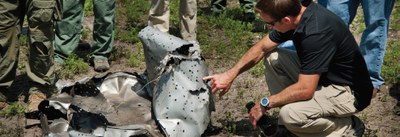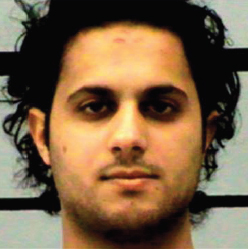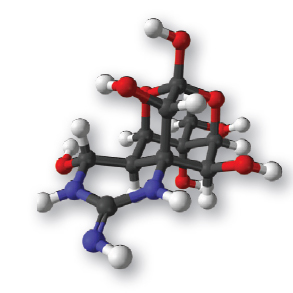NSB Brochure
Federal Bureau of Investigation: National Security Branch

The FBI’s National Security Branch carries out its mission while preserving the constitutional and statutory rights of Americans. The FBI’s long history of protecting civil rights provides a unique perspective on maintaining a proper balance between protection and privacy.
National Security Branch
The National Security Branch (NSB) was established on September 12, 2005, in response to a presidential directive and Weapons of Mass Destruction (WMD) Commission recommendation to create a “National Security Service” combining the missions, capabilities, and resources of the FBI’s counterterrorism, counterintelligence, and intelligence elements under the leadership of a senior FBI official.
 In July 2006, the NSB created the WMD Directorate to integrate components previously distributed throughout the FBI. The NSB also includes the Terrorist Screening Center, which provides crucial, actionable intelligence to state and local law enforcement, and the High-Value Detainee Interrogation Group, an interagency body whose members collect intelligence from key terror suspects to prevent attacks against the United States and its allies.
In July 2006, the NSB created the WMD Directorate to integrate components previously distributed throughout the FBI. The NSB also includes the Terrorist Screening Center, which provides crucial, actionable intelligence to state and local law enforcement, and the High-Value Detainee Interrogation Group, an interagency body whose members collect intelligence from key terror suspects to prevent attacks against the United States and its allies.
Combining the FBI’s national security workforce and mission under one leadership umbrella enhances our contribution to the national intelligence effort and allows us to leverage resources from our intelligence community (IC), federal, state, local, tribal, private, and foreign partners.
Mission
The NSB carries out the FBI’s responsibilities as the lead intelligence and law enforcement agency in the nation to detect, deter, and disrupt national security threats to the United States and its interests. While maintaining the Bureau’s goal to preserve civil liberties, the branch collects and analyzes intelligence pertaining to national security threats and shares this information with our public, private, federal, state, local, and tribal partners.
The FBI continues to refine its intelligence capabilities to stay ahead of the evolving threats our nation faces. Intelligence directs how we understand threats, how we prioritize and investigate these threats, and how we target our resources to address them.
To be successful, we continue to integrate our intelligence and law enforcement capabilities in every operational program. The traditional distinction between national security and criminal matters is increasingly blurred as terrorists commit crimes to finance their activities and computer hackers create vulnerabilities foreign spies can exploit. The integration of intelligence and investigations makes the FBI uniquely situated to address these threats and vulnerabilities across programs. The FBI draws on both intelligence and law enforcement tools to determine strategically where and when to disrupt threats.
 The NSB’s daily successes in addressing these national security threats are reinforced by longstanding partnerships. With thousands of private and public business alliances and more than 4,200 interagency members on our Joint Terrorism Task Forces (JTTFs)—interagency teams of federal, state, and local entities which carry out the FBI’s responsibility for leading and coordinating all intelligence and investigative activity involving terrorism—the FBI’s partnerships are essential to achieving our mission and ensuring a coordinated approach to addressing national security threats.
The NSB’s daily successes in addressing these national security threats are reinforced by longstanding partnerships. With thousands of private and public business alliances and more than 4,200 interagency members on our Joint Terrorism Task Forces (JTTFs)—interagency teams of federal, state, and local entities which carry out the FBI’s responsibility for leading and coordinating all intelligence and investigative activity involving terrorism—the FBI’s partnerships are essential to achieving our mission and ensuring a coordinated approach to addressing national security threats.
NSB Components
The Counterterrorism Division works with intelligence and law enforcement partners to provide a centralized, comprehensive, and intelligence-driven approach to address international and domestic terrorism-related matters. It also oversees the more than 100 JTTFs nationwide.
The Counterintelligence Division is charged with preventing and investigating foreign intelligence activities within the United States. The Counterintelligence Division targets both traditional and emerging nontraditional threats and investigates espionage activities using both intelligence and law enforcement techniques. The Counterintelligence Division is home to the FBI’s Counterproliferation Center, which focuses on preventing the acquisition of WMD and controlled technologies by our nation’s adversaries.
The Directorate of Intelligence is the FBI’s dedicated national intelligence workforce, with clear authority and responsibility for all FBI intelligence functions. The DI’s mission is to provide strategic support, direction, and oversight to the FBI’s intelligence program, and it carries out its functions through embedded intelligence elements at FBI Headquarters and through Field Intelligence Groups in each field division.
The Weapons of Mass Destruction Directorate leads efforts to deny state and non-state sponsored adversaries access to WMD materials and technologies, to detect and disrupt the use of WMD, and to respond to WMD threats and incidents. The WMD Directorate integrates and links all the necessary counterterrorism, intelligence, counterintelligence, and scientific and technical components to accomplish the FBI’s overall WMD mission.
The Terrorist Screening Center consolidates the government’s approach to terrorist screening by creating and maintaining a single comprehensive watchlist of known or suspected terrorists, and making this consolidated list available to all federal, state, and local screeners through its 24/7 call center.
The High-Value Detainee Interrogation Group is an interagency body, housed within the NSB, and staffed with members from various IC agencies. Its mission is to gather and apply the nation’s best resources to collect intelligence from key terror suspects in order to prevent terrorist attacks against the United States and its allies.
Successes
Texas Explosives Plotter Captured

“Puffer Fish” Toxin Attack Thwarted

The Alaska Peacemakers Militia Disrupted

U.S. Capitol Bombing Attempt Foiled

Plot to Steal Trade Secrets Uncovered

* * *
The FBI has a rich history of using intelligence to solve cases. Ranging from investigating gangsters in the 1930s; to unraveling intelligence threats during the Cold War era; to fighting organized crime in the 1970s; to combating drug trafficking in the 1980s; to identifying and disrupting terrorist networks in the past decades, we have accepted the nation’s most pressing challenges and risen to the occasion. In our role as both an intelligence agency and a law enforcement agency, we are uniquely positioned to respond to the changing world with its new adversaries and threats.
Please contact your local FBI office and ask to speak with a representative for national security matters.
You may also contact the FBI’s national Headquarters at 202-324-3000, or write to us at:
National Security Branch
J. Edgar Hoover Building
935 Pennsylvania Avenue, NW
Washington, D.C. 20535
| NSB Links |
|
Inside the NSB |

